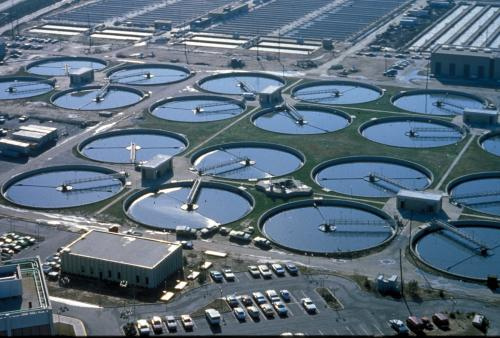Sodium humate, a sodium salt of humic acid extracted from natural organic materials such as lignite, peat, leonardite, or coal, is a highly effective and environmentally friendly compound widely utilized in water treatment. Its unique chemical properties, including a rich composition of functional groups like carboxylic and phenolic groups, enable it to address a broad spectrum of water quality challenges. These challenges include contamination by heavy metals, organic pollutants, suspended solids, and undesirable odors or colors, which are common in industrial wastewater, municipal water systems, and environmental remediation projects. Sodium humate’s versatility, biodegradability, and cost-effectiveness make it an attractive alternative to synthetic chemicals, particularly in applications requiring sustainable and efficient solutions. Its ability to bind contaminants, stabilize water chemistry, and enhance treatment processes has positioned it as a valuable tool in both small-scale and large-scale water treatment operations.
Applications of Sodium Humate in Water Treatment
- Heavy Metal Removal Sodium humate binds to toxic heavy metals such as lead, cadmium, copper, zinc, and mercury through a process called chelation. Its molecular structure, rich in negatively charged groups, attracts and traps these metal ions, reducing their concentration in water. This is particularly valuable for treating wastewater from industries like mining, electroplating, or chemical manufacturing, where heavy metals are prevalent.
- Flocculation and Water Clarification As a natural flocculant, sodium humate helps aggregate fine particles, sediments, and colloidal matter in water, forming larger clumps that settle to the bottom. This process reduces turbidity, making water clearer and easier to filter. It is widely used in municipal water treatment plants and industrial facilities to improve water quality.
- Adsorption of Organic Pollutants Sodium humate’s porous structure and high surface area enable it to adsorb organic contaminants, including dyes, pesticides, herbicides, and phenolic compounds. This makes it effective for treating wastewater from textile, agricultural, or chemical industries, where organic pollutants are common.
- pH Stabilization By acting as a buffering agent, sodium humate helps maintain a stable pH in water, preventing extreme fluctuations in acidity or alkalinity. This stability is critical for optimizing other water treatment processes, such as disinfection or chemical precipitation, and ensuring consistent water quality.
- Odor and Color Reduction Sodium humate binds to organic compounds responsible for unpleasant odors and discoloration in water, such as those from decaying organic matter or industrial byproducts. This improves the aesthetic quality of water, making it suitable for drinking water treatment, aquaculture, or recreational use.
- Support for Biological Treatment In biological wastewater treatment systems, sodium humate can serve as a carbon source for microorganisms that break down organic matter. This enhances the efficiency of biological processes, making it a valuable addition to eco-friendly treatment methods.
Benefits of Sodium Humate
- Eco-Friendly: Derived from natural sources like lignite, peat, or leonardite, sodium humate is biodegradable and less harmful to the environment than synthetic chemicals.
- Cost-Effective: It is generally more affordable than synthetic coagulants or adsorbents, making it suitable for large-scale applications.
- Versatile: Sodium humate addresses multiple contaminants, including metals, organics, and suspended solids, reducing the need for multiple treatment agents.
- Ease of Use: It integrates easily into existing water treatment systems without requiring significant modifications.
Tips for Choosing High-Quality Sodium Humate
Selecting the right sodium humate is critical to achieving optimal results in water treatment. Below are practical tips to guide the selection process:
- Check Humic Acid Content The effectiveness of sodium humate depends on its humic acid content, typically expressed as a percentage. For water treatment, look for products with a humic acid content of at least 50–70% to ensure strong chelating and adsorption properties. Higher content is generally better for heavy metal removal and organic pollutant adsorption.
- Verify Solubility Sodium humate should be highly water-soluble to ensure it disperses effectively in treatment systems. Check product specifications for solubility in water, as poorly soluble products may clump or leave residues, reducing efficiency.
- Assess Purity and Contaminants Ensure the sodium humate is free from harmful impurities, such as heavy metals or synthetic additives, which could contaminate treated water. Request a Certificate of Analysis (CoA) from suppliers to confirm purity and compliance with environmental or water treatment standards.
- Consider the Source Material Sodium humate is derived from sources like lignite, peat, or leonardite. Leonardite-based sodium humate often has a higher humic acid content and better performance due to its rich organic composition. Ask suppliers about the source material to gauge quality.
- Evaluate Particle Size and Form Sodium humate is available in powder, granular, or liquid forms. Powders are suitable for precise dosing in industrial systems, while granules may be easier to handle in larger-scale operations. Liquid forms are convenient for direct application but may have lower humic acid concentrations. Choose the form that best suits your treatment setup.
- Request Performance Data Reputable suppliers often provide data on the product’s performance in specific applications, such as heavy metal removal efficiency or flocculation capacity. Request test results or case studies to ensure the product meets your needs.
- Ensure Regulatory Compliance If used for drinking water treatment or discharge into natural water bodies, the sodium humate must comply with local regulations, such as those set by the U.S. Environmental Protection Agency (EPA), the European Union, or Vietnam’s environmental standards (depending on your location). Verify that the product is approved for your intended use.
- Test in Small Scale First Before committing to a large purchase, conduct small-scale trials to evaluate the sodium humate’s performance in your specific water treatment conditions. Factors like water pH, contaminant types, and treatment goals can affect results, so testing helps determine the optimal product and dosage.
Where to Source Sodium Humate
Sodium humate is available from various suppliers, ranging from local distributors to international manufacturers. Below are options and considerations for sourcing it:
- Chemical and Agricultural Suppliers
- Global Suppliers: Companies specialize in humic-based products and often supply sodium humate for industrial and water treatment applications. These suppliers are reliable for high-quality products with detailed specifications.
- Regional Distributors: Contact local chemical suppliers or agricultural input providers, as sodium humate is also used in agriculture and may be available through these channels.
- Online Marketplaces: Platforms like Made-in-China offer sodium humate from various manufacturers. When purchasing online, verify the supplier’s reputation, read reviews, and request product documentation (e.g., CoA, Safety Data Sheets) to ensure quality.
- Specialized Humic Product Manufacturers Some companies focus specifically on humic and fulvic acid products.
- Local Mining or Peat Industries In regions with lignite or peat deposits, local mining or processing companies may produce sodium humate as a byproduct. Contacting these industries directly can yield cost-effective options, though quality control may vary compared to established suppliers.
- Trade Associations and Industry Networks Organizations like the International Humic Substances Society (IHSS) or local water treatment associations may provide directories of trusted suppliers.
- Considerations for Sourcing
- Shipping and Logistics: If sourcing internationally, factor in shipping costs, import duties, and delivery times, especially for bulk orders.
- Minimum Order Quantities (MOQs): Some suppliers, particularly on platforms like Alibaba, have high MOQs. Clarify requirements if you need smaller quantities for testing.
- Supplier Verification: Research the supplier’s reputation through customer reviews, industry certifications, or references. Avoid suppliers with unclear product specifications or unverifiable credentials.
Practical Considerations for Use
- Dosage Optimization: The amount of sodium humate needed depends on water chemistry and contaminant levels. Start with manufacturer-recommended dosages (e.g., 50–500 mg/L for heavy metal removal) and adjust based on testing.
- Compatibility: Ensure sodium humate is compatible with your treatment system, as it may interact with other chemicals or processes. For example, it may need to be paired with filtration or sedimentation systems for optimal results.
- Storage: Store sodium humate in a dry, cool environment to prevent degradation. Powders and granules should be kept in sealed containers to avoid moisture absorption.
- Safety: Sodium humate is generally safe but can cause dust irritation in powder form. Use appropriate personal protective equipment (PPE) during handling.
Conclusion
Sodium humate is a highly effective, eco-friendly, and cost-efficient material for water treatment, capable of addressing heavy metals, organic pollutants, turbidity, pH fluctuations, and odors. By carefully selecting a high-quality product with adequate humic acid content, solubility, and purity, and sourcing it from reputable suppliers, users can maximize its benefits. Whether through global chemical suppliers, specialized humic product manufacturers, or local distributors, sodium humate is widely accessible for various water treatment needs.









